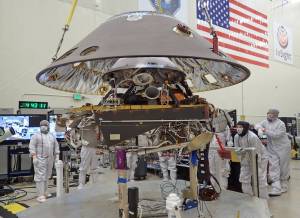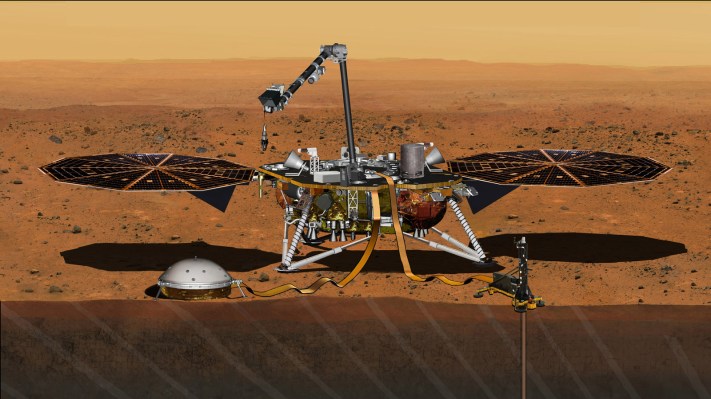NASA announced that it will send its next lander to Mars, known as the InSight Mars lander, in May of 2018. The mission was originally on schedule to launch later this month, but a technical issue found late last year put the InSight launch on hold.
The new launch date comes as great news to the InSight team because there was a possibility that the technical issue would not be resolved in time and the mission would be cancelled altogether.
InSight, which stands for Interior Exploration using Seismic Investigations Geodesy and Heat Transport, is an international mission designed to help us understand how rocky planets, like Mars and the Earth, formed and evolved.
Using two science instruments on board, InSight will collect seismology and temperature data from deep beneath the Martian surface.
NASA’s Jet Propulsion Laboratory has worked with France’s space agency, the Centre National d’Études Spatiales (CNES) and the German Space Agency to design the scientific instruments. The InSight science team also includes researchers from 11 different nations.

The back shell of the InSight spacecraft lowered onto the lander in a clean room at Lockheed Martin / Image courtesy of NASA
“The quest to understand the interior of Mars has been a longstanding goal of planetary scientists for decades. We’re excited to be back on the path for a launch, now in 2018.” – John Grunsfeld, associate administrator for NASA’s Science Mission Directorate
In December 2015, a technical problem was identified in one of the two scientific instruments. The seismometer instrument, provided by CNES, requires a sealed vacuum to operate properly in the harsh Martian environment. During tests, the seismometer functioned properly, but engineers identified leaks in the vacuum in which it operated and were unable to quickly identify a sufficient resolution.
Today, engineers believe they’ve finally found a solution to the leak. The additional time leading up to the 2018 launch will allow the InSight team to redesign, build and conduct qualifications of the new vacuum enclosure.
“The rework of the seismometer’s vacuum container will result in a finished, thoroughly tested instrument in 2017 that will maintain a high degree of vacuum around the sensors through rigors of launch, landing, deployment and a two-year prime mission on the surface of Mars.” – NASA’s Jet Propulsion Laboratory
Delays like this can take an expensive toll. NASA stated that the cost of the two-year delay is currently being assessed with an estimate expected in August of this year. In addition to cost concerns, InSight’s delay and additional budget requirements may negatively affect other programs in NASA’s planetary science program.
Ultimately, however, with $525 million already invested in InSight, it’s a sigh of relief to many that a solution has been found and a new launch date set.
NASA’s next big Mars mission in the queue is the Mars 2020 rover, which consists of seven different science instruments and is estimated to cost around $1.9 billion.
Robotic Mars missions like InSight and Mars 2020 fall in line with NASA’s “Journey to Mars“, the agency’s initiative to develop the capabilities and knowledge required to ultimately send humans to the red planet.
